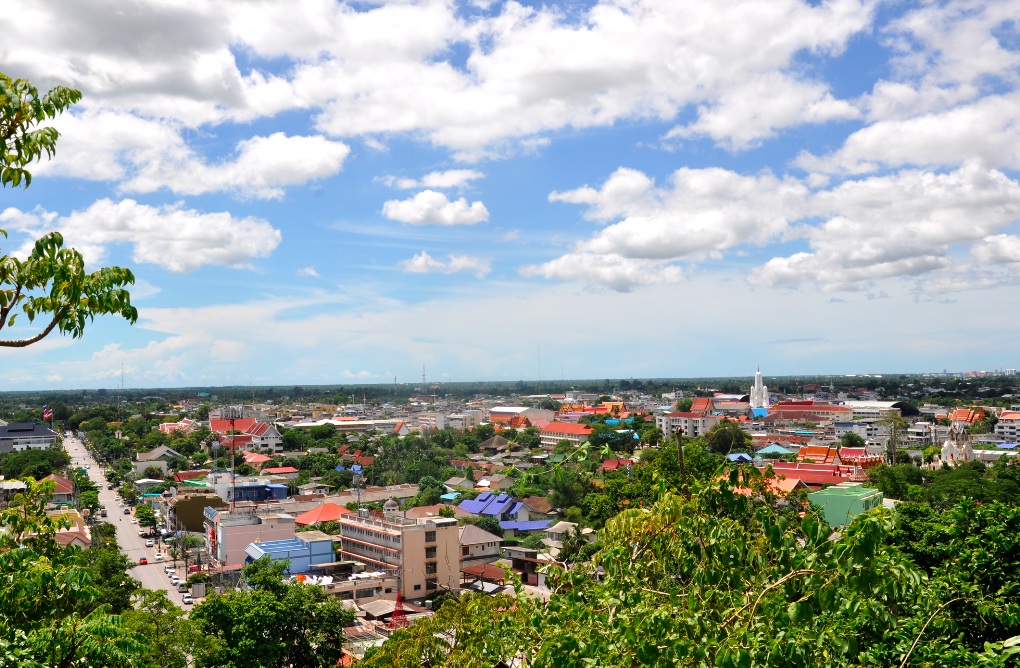

For those who are tired of exploring Bangkok and want a city break, do head over to Phetchaburi, a small, tranquil town about 2-3 hours away from the bustling capital. It has temples, palaces and cave shrines, and is a convenient stop on your way to the beach. Best of all, Phetburi, as it’s usually called, remains an untouched and largely untouristed provincial town, complete with riverside markets and old teak shophouses. It’s a great place for random wandering. I had originally planned to go to Phetchabun for the mountain scenery, but due to the wrong booking of hotel, I ended up in Phetchaburi which also turned out to be a nice surprise for the weekend with the girlfriend.

A little bit of history about Phetchaburi. Historically, Phetchaburi is a visible timeline of kingdoms that have migrated across Southeast Asia. During the 11th century the Khmer empire settled in, although their control was relatively short-lived. As Khmer power diminished, Phetchaburi became a strategic royal fort during the Thai-based Sukhothai and Ayuthaya kingdoms and in the 17th century it flourished as a trading post between Myanmar (Burma) and Ayuthaya. The town is often referred to as a ‘Living Ayuthaya’ because while the great temples of the former capital were destroyed, smaller but similar ones here live on.


Top on the list of places to visit in Phetchaburi should be Phra Nakhon Khiri Historical Park. This national historical park sits regally atop Khao Wang (Palace Hill), surveying the city with subdued opulence. Rama IV (King Mongkut) built the palace and dozens of surrounding structures in 1859 as a retreat from Bangkok. The hilltop location allowed the king to pursue his interest in astronomy. Parts of the palace, made in a mix of European, Thai and Chinese styles, are now a museum furnished with royal belongings. The entrance to the park grounds is 150 baht and it is worth visiting this place to learn more about the history of the city. It is so popular that even the princess and the king came here to visit several times, to relax in their palace away from the capital. There are some mischievous monkeys here, so be careful not to hold food or drinks in your hands, if not the agile monkeys would snatch it away, as we saw it happen to some unknowing tourists.


Another place with many monkeys is Tham Khao Luang. About 4km north of town is Khao Luang Cave, a dramatic stalactite-stuffed cavern that’s one of Thailand’s most impressive cave shrines, and a favourite of King Rama IV when he was a monk. Accessed via steep stairs, it’s lit by a heavenly glow every morning (clouds permitting) when sunbeams filter in through the natural skylight. There are many Buddha statues in the cave, in various positions. I was in awe when the sunlight started to shine through the cave, casting an angel’s halo over my head.


Puek Tian is a few miles to the south of Chao Samran, and is somewhat larger and more popular, although evidently dilapidated. The beach area is not very nice for swimming because there are sharp rocks and strong waves crashing against the short. It is distinguished by the very large statues of imaginary figures from Thai literature dispersed around the beach area. During low tide, one is able to walk from the mainland to the statue islands, but once high tide starts, you would have to swim across to the shore or end up being stranded with the statues. The largest one with her hands outstretched really looked creepy in the evening.

About 40km (25 miles) south of Phetchaburi lies Cha-am, a rapidly developing resort with a fine long beach that is immensely popular with Thai families. There are also many good hotels and guest houses aimed at visitors from overseas, especially from Northern Europe. The ordinary fan buses take about 90 minutes and cost you 40 baht. For those who do not like the tourist crowds of Hua Hin, then Cha-am would be a better option. We found a relaxing massage place and had dinner at a local restaurant which serves delicious Thai food.


The whole of the western half of the province is taken over by the Kaeng Krachan National Park, the largest such park in Thailand, and a pristine evergreen jungle covering more than 1,000 square miles that remains mostly unexplored to this day. We did some hiking in the national park and enjoyed being alone in the woods, just the two of us. There were some avid nature photographers who were spotting birds and butterflies. As we walked higher up along the gravel path, the trees gave an opening to allow some sunlight to shine through, it was then that we could imagine over the canopy of trees that the other side is the Myanmar border. We were that close to Myanmar!


There’s far more to Thai cuisine than noodles and rice, and Phetchaburi is well know for its khanom mor gaeng – a tasy dessert. Similar to a Western egg custard, it’s a soft, sweet, egg-based treat which also includes traditional Thai ingredients coconut milk and palm sugar and starch in the form of taros or mung beans.

These are the main highlights that we managed to achieve during our two full days in Phetchaburi, before heading back to Bangkok. It was my 13th province visited to date and I am glad to discover a new place in Thailand. Perhaps next time I would make it to Phetchabun for the mountains above cloud level?


